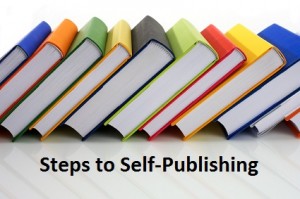The Steps to Successful Self-Publishing
 Your manuscript is done and you're ready to get your book printed and out to the masses. You've looked at countless websites that tell you they'll "take care of" all the publishing details. But, you're unclear about what those details really are. Here is a summary of the steps to self-publishing.
Your manuscript is done and you're ready to get your book printed and out to the masses. You've looked at countless websites that tell you they'll "take care of" all the publishing details. But, you're unclear about what those details really are. Here is a summary of the steps to self-publishing.
1. Proofread your book. Or better yet, have someone else proofread it. Even the biggest grammar nut and spelling champion will overlook errors in his own manuscript because he's seen it so many times. Nothing says "unprofessional" more quickly than permanent errors on the printed page.
2. Get an editor. Editors look for confusing passages, inconsistencies in facts and/or characters, structural problems and readability. Although it may be tough to take their criticism, editors are your friends because they make your look your best.
3. Select a great title. Some authors have the title before writing word one, but it's not a bad idea to take a second look at your title now that others have (hopefully) read it. Ask for opinions from your editor and trusted advisors. A title can make a huge difference in whether or not someone buys your book.
4. Once your manuscript has been proofread and edited, use a page layout program to get proper margins, headers, and footers as well as type face. This is very important so that the book looks professionally printed and not like something you typed up in Microsoft Word and printed from your home office. Printing companies like us can help with this process.
5. Create a great cover that will help sell the book. Consider using a graphic designer who has done other book covers because he/she will probably supply the proper layout that your printer will need much more quickly and professionally than you. Look at other books in your genre and see if there is some commonality in colors, typeface and general layout. Although your cover should attract attention, you don't want it to be misrepresent your topic or genre.
Also, remember that your book has a back cover. Some authors find the back cover to be a really tough area to design and write because it usually includes a "teaser" that helps entice your reader to purchase without revealing too much. Take a look at the back covers of other books in your genre to see how to handle it. The back cover also often includes an author photo which you can polish using an online photo editing tool. You'll likely need a good one.
6. Obtain an ISBN number, as this will make you the registered publisher of book. There is only one US agent that distributes ISBN numbers (bowker.com). If someone else gets the number for you, then you may not be the registered publisher and you won't have as much control over your own book. Consider getting multiple ISBN numbers for each version, such as an ebook, because you have to have one for all forms.
7. Talk with your printer about purchasing the most optimal quantity of books to get started. Of course, the more you print up front, the lower your per book cost, but it's up to you and your budget. Most first-time authors order a supply for a book signing or two, giving away copies to family and friends, and maybe even an upcoming speaking event. The good news is that most printers like us can accommodate a reorder in just a few days.
There are several key steps to self-publishing a book, and we would love to be your guide along the way!
